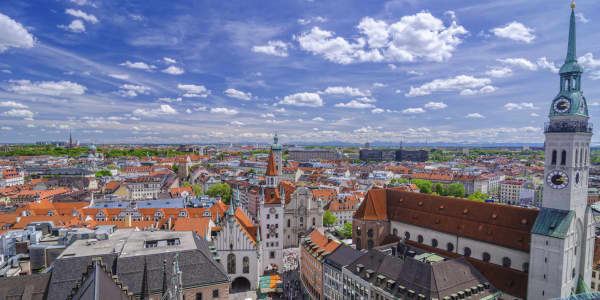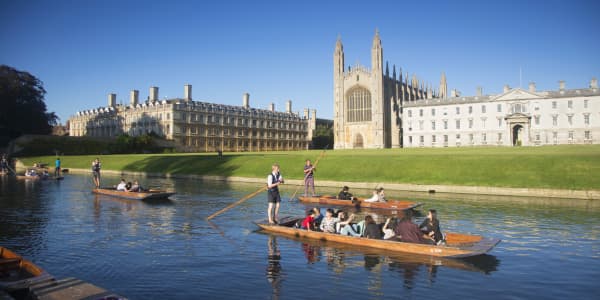As the world's population keeps on growing, and concerns about dwindling resources and climate change increase, solutions for a more sustainable city are emerging.
By 2050, the world will have more than 10.2 billion people living on it, with over 70 percent of them living in cities, according to data from the UN and the sustainable development research organization Worldwatch Institute.
But as the size of cities increase, so do the number of challenges: from how to house and feed the new inhabitants to making sure the environmental impact remains minimal.
Here are some of the latest innovations to create the future's sustainable cities.
By CNBC's Alice Tidey.
Smart Highways
To improve the driving experience, Studio Roosegaarde and Heijmans Infrastructure, the designers behind what they call the 'Route 66 of the Future' decided to focus on the highway rather than the car.
Awarded with a Best Future Concept award from the Dutch Design Week in 2012, the two designers' aim is to make roads more sustainable and interactive to adapt to specific traffic situations.
Ideas include using foto-luminising powder to make glow-in-the-dark roads and paint that reacts to temperature fluctuations to warn about ice.
Finally, the 'induction priority lane' would use induction coils positioned under the road surface to recharge electric cars as they drive.
Smart homes
The house of the future will be "smarter": from the way it's built to the technology it uses.
The existing eco-cities of the world have built their buildings to LEED standards (Leadership in Energy and Environmental Design), a rating system developed by the U.S. Green Building Council and aimed at making buildings more environmentally responsible and resource efficient.
But technology is increasingly playing a major role in the smarter house as it allows owners to not only remotely control appliances but also monitor their energy and water consumption.
Underground waste management
Hammarby is an award-winning eco-town on the outskirts of Stockholm, erected on former industrial land.
At the heart of the project is recycling. Every building contains a recycling room equipped with refuse chutes, directly linked to underground pipes, in which, at a speed of about 43 miles per hour, waste is propelled to a central collection station, thus making waste collection by trucks redundant.
The waste is then transformed into biogas, used to fuel the city's buses or into "sludge" from waste water, clean enough to fertilise the town's green spaces.
Water management
The South Korean city of Songdo was built from scratch on land reclaimed from the Yellow Sea and includes a system aimed at reducing the amount of drinkable water the city uses for street cleaning and flushing toilets.
To achieve its goal, the town harvests and stores rain and then uses this "gray water" to irrigate, clean its streets and for toilet flushing in its commercial buildings.
The city has also created the country's first seawater canal, in which water from the sea is purified by extracting mud and sand from it, which prevents it from freezing in the winter, enabling water taxis to operate year-round.
Vertical farming
There's nothing really new to vertical farming – remember the Hanging Gardens of Babylon?
But with an additional 3 billion mouths to feed by 2050, the UN's Food and Agriculture Organization estimates that a 70 percent increase in global food production will be needed. Furthermore, with over two-thirds of the world expected to be living in cities, and about 80 percent of global land suitable for agriculture already in use, according to Dickson Despommier, professor of public health at Columbia University, vertical farming is seen as a sustainable supplement to traditional agriculture.
Singapore, with its limited amount of space and growing population, has backed the technology and is the site for the world's first commercial vertical farm.





